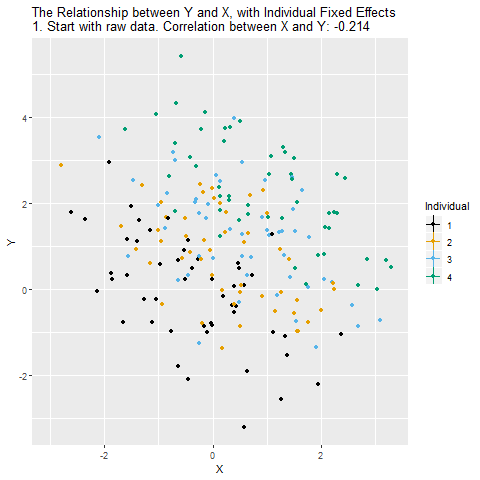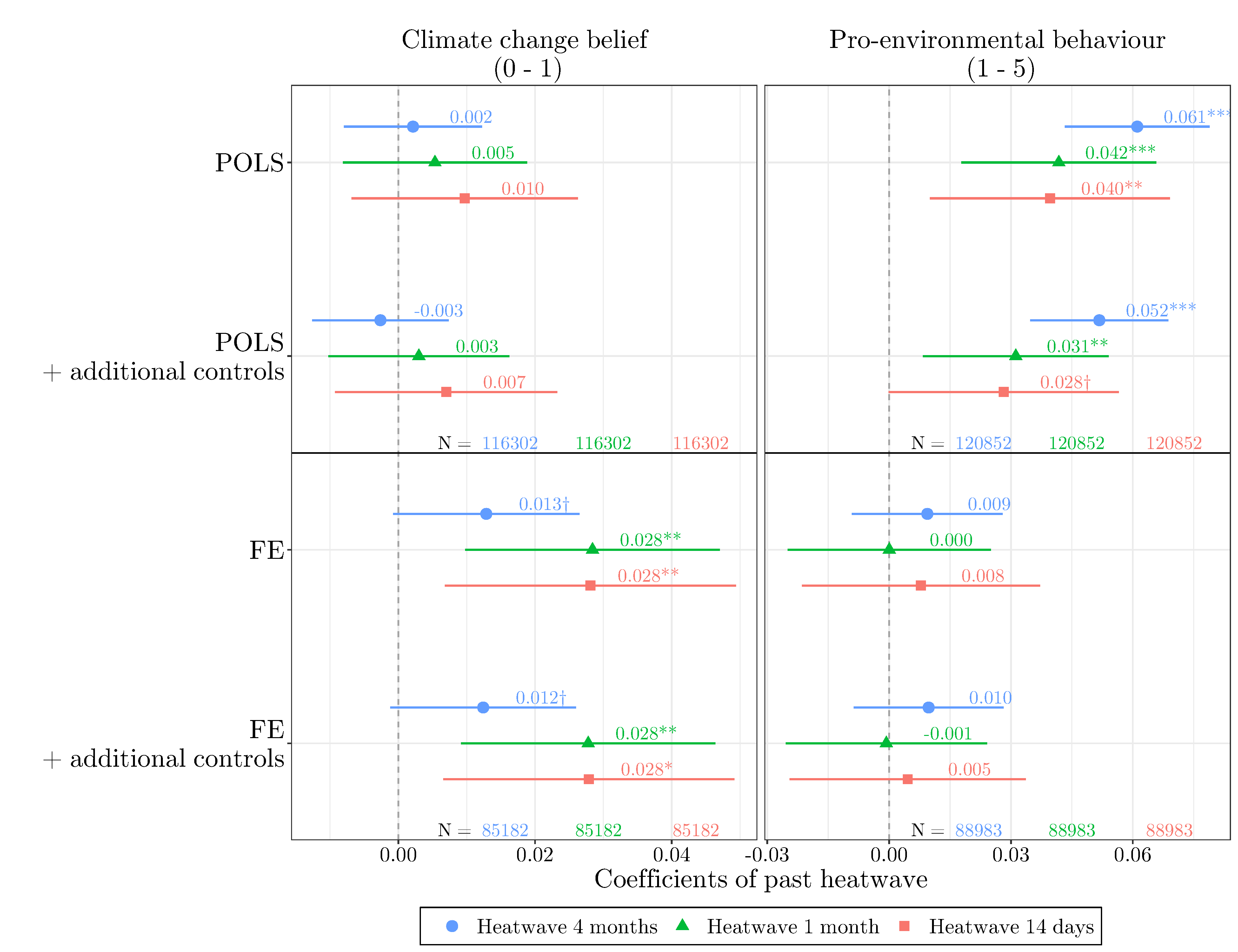Panel Data Analysis
Introduction
With usual cross-sectional data, we only observe each unit once.
With panel data, we observe the same unit (person, region, or country) repeatedly over time.
This allows applying statistical methods which identify relations based on the within-unit changes rather than the differences between units. We can then account for some statistical problems of non-experimental studies and increases the confidence in a causal interpretation of the results.
This course provides a hands on introduction to the preparation of panel data and the application of panel data methods. The course focuses on the most common methods like Difference in Differences, Random Effects, and Fixed Effects. We will also briefly discuss some extensions like novel Diff-in-Diff estimators and Fixed Effects Individual Slopes. The empirical part will be based on R and RMarkdown.
This course profited a lot from teaching materials by Josef Brüderl and Volker Ludwig: Slides
Why do we need panel data analysis?
In empirical social sciences, we are often interested in the causal research questions: we want to investigate questions of cause and effect. Using purely cross-sectional data, we can compare two (or more) different units (e.g. people, states, companies) and test is there exist differences according to our treatment or variable of interest.
However, these units may not only differ in the dimension of interest, but may also be different in many other aspects, and it is likely that we do not obverse all the relevant aspects. In the end, we might erroneously conclude that there is a causal effect, even though we only observe correlation (which is confounded by other differences).

Randomized controlled trials (RCT) provide a way to circumvent the problems of unobserved differences between treatment and control cases.
By randomly selecting some individuals and exposing them to the treatment of interest, we make sure that no (unobserved) characteristics of these individual can be correlated with the treatment. In other words, units in the treatment group should - on average - be identical to units in the control group on all characteristics except the treatment.
However, randomly exposing some individuals to treatment and withholding treatment from others can be tricky in the social sciences. Think about the effects of education, the effects of marriage, or the effect of pregnancy (good luck with your ethics committee).
A potential middle ground between those two approaches: “compare alike with alike” (Firebaugh 2008). This is what we usually aim for by using panel data. We do not compare two different units to each other. Rather, we compare a unit in an earlier stage to the same unit in a later stage. Not as save as an RCT, but much more ethical for many research questions.


Illustration by Huntington-Klein (2021): Introducing a binary control variable (left) and introducing fixed effects (right)
Some examples
Plant openings and housing prices (Currie et al. 2015)
Life course events and happiness (Clark and Georgellis 2013)
London Congestion Charge and School Attendance (Conte Keivabu and Rüttenauer 2022)
Extreme Weather Events Elevate Climate Change Belief but not Pro-Environmental Behaviour (Rüttenauer 2023)

There are obviously plenty of other examples on various topics, such the determinants of life satisfaction (Gattig and Minkus 2021; Kapelle et al. 2022), family dynamics and the gender wage gap Zoch (2023), or drivers of volunteering and pro-social behaviour (Aksoy and Wiertz 2023; Dederichs and Kruse 2023). Moreover, panel data and Differences-in-Differences designs occupy a prominent position the evaluation of social policy impacts (Conte Keivabu 2022; Franzen and Bahr 2023; Goodair and Reeves 2022; Mader and Rüttenauer 2022; Kneip and Bauer 2009).
Further materials
Extensive slides by Josef Brüderl and Volker Ludwig: Slides
See also Brüderl and Ludwig (2015).
Books:
Intuitive: Allison (2009)
Comprehensive and formal: Wooldridge (2010)
For R experts: Croissant and Millo (2019)
General introductions to causal estimation techniques: Angrist and Pischke (2015), Cunningham (2021), Firebaugh (2008), Huntington-Klein (2021)
The books by Cunningham (2021) (Link) and Huntington-Klein (2021) (Link) are freely available online!